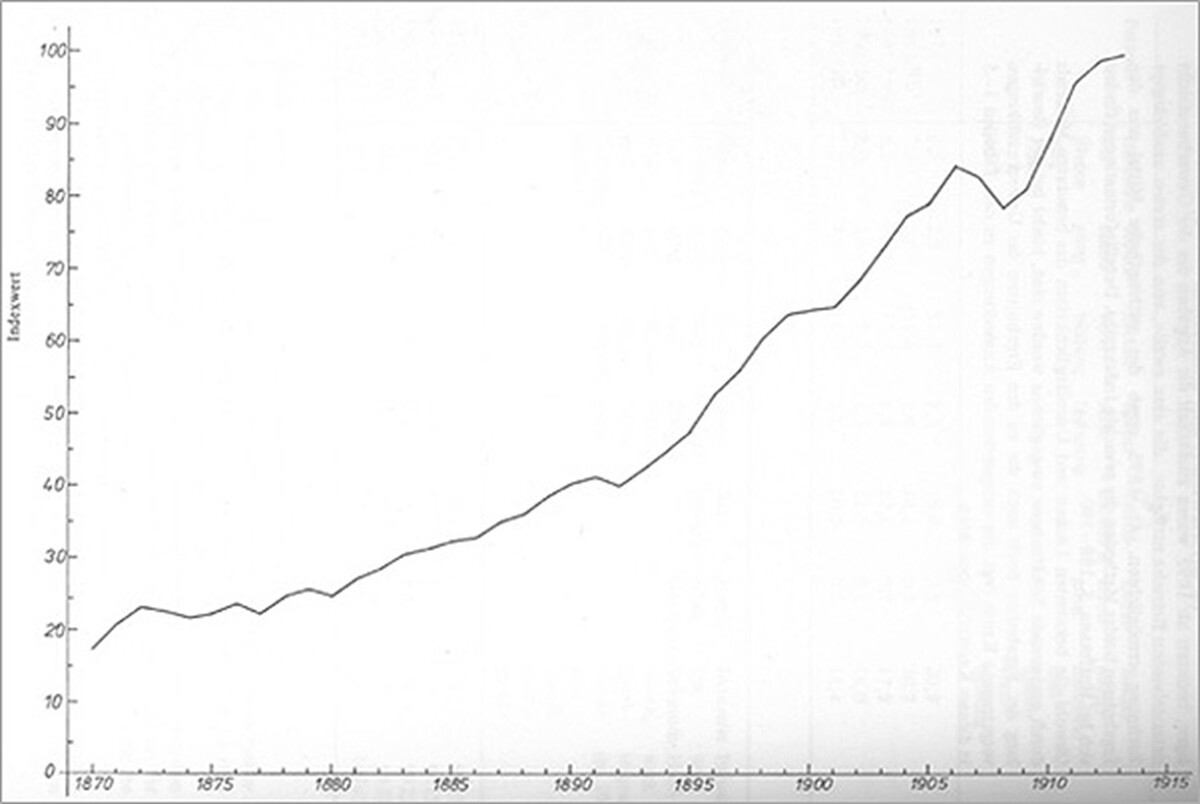Source
The index numbers by [Rolf] Wagenführ (pp. 58–61) for mining and the
individual sectors of industry, which are not provided here, differ
considerably from those calculated by Hoffmann, Das Wachstum der
deutschen Wirtschaft, pp. 335–95 –– particularly due to the different
weighting. However, the variations of the figures pertaining to total
output are minimal and derive largely from the fact that in contrast to
Wagenführ, Hoffmann excludes mining and salt works from his table of
total output in industry and the trades (p. 390). The overall index of production in industry and the trades outlined
here represents a summary of separate indices concerning individual
branches calculated by using the statistical method of index number
formation. This method entails setting the values of the reference year
(in this case 1913) at 100. The source materials were data on production
statistics (quantities), estimates, or values adjusted to price. Cf.
Wagenführ, “Die Industriewirtschaft”, p. 47. The essential point is not that all branches are taken into
consideration but that the selection affords a high representative
value. Although Hoffmann (p. 395f.) criticizes Wagenführ’s index series,
he nevertheless observes a substantial level of agreement with his own
estimates if mining is disregarded; however, since Wagenführ, on the
other hand, did consider mining in his overall series, the latter was
more suitable for the purpose at hand.
Source: The curve is based on index numbers in Rolf Wagenführ, “Die Industriewirtschaft. Entwicklungstendenzen der deutschen und internationalen Industrieproduktion 1860 bis 1932”, in Vierteljahreshefte zur Konjunkturforschung. Sonderheft 31, Berlin 1933, p. 58.; published in Gerd Hohorst, Jürgen Kocka und Gerhard A. Ritter, Sozialgeschichtliches Arbeitsbuch: Materialien zur Statistik des Kaiserreichs 1870–1914. Munich, 1975, vol. 2, p. 78–79.